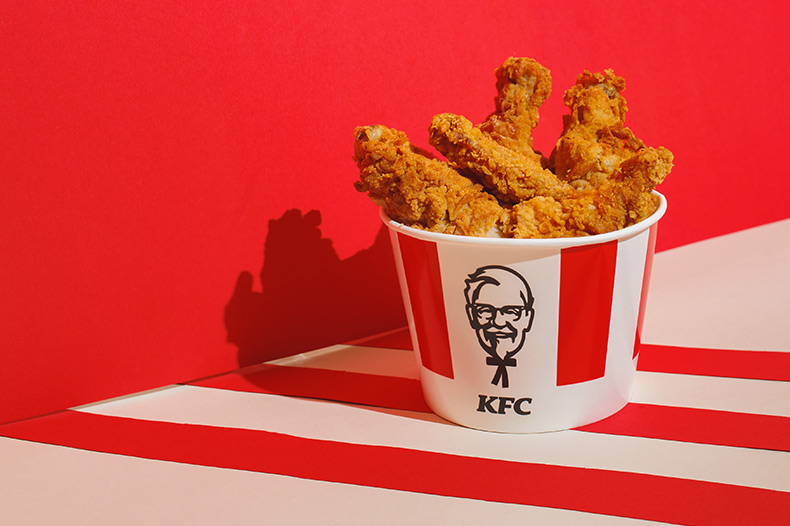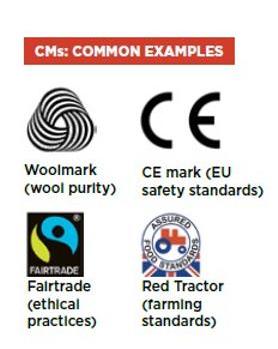Certification Marks: A crash course
Jasmine Sihre shares her tips for first-time filers.

Certification Marks (CMs) tell you that a product meets a specific standard or possesses a particular set of characteristics. The standard or characteristics are established by a set of regulations filed shortly after the application. This is not a mark that is used to offer goods or services by the proprietor, since any authorised party can use a CM in connection with certifying its goods or services, providing that those goods or services meet the requirements set out in the regulations.
A CM (and a collective mark) may be accepted if it indicates a geographic origin. This is, of course, very different to the requirements for an ordinary trade mark. However, while the function of a CM is to assure a standard, it should not mislead the consumer into believing that the mark is a badge of origin. An objection of this nature can often be often be overcome by adding the words “certification mark” to the mark, which is a type of accepted amendment.
Two-stage application

The CM application process involves two stages. The first stage includes filing Form TM3 to demonstrate the representation of the mark and the associated goods and services. These are then examined by the UK IPO on absolute and relative grounds.
At the second stage, the applicant provides a set of regulations within three months of the filing date. The regulations are filed with Form TM35 and a fee of £200, and then examined. And it’s this second stage that can get complicated for a first-time filer.
Five important pieces
The regulations must contain information governing the CM’s use. They may also include definitions and additional clauses regarding aspects such as termination, prohibition and control. Specifically, they should include the following five key points:
- Who is authorised to use the mark. The registration can be used by any party if it can show that the relevant characteristics are being certified. However, CMs can be limited to a specific group of users if the certification is in connection with a specialist service. Regulations can also specify who administers the CM and what powers they may have, and whether a certificate will be issued to the user to show that it is certified.
- The characteristics certified by the mark. While a list of the goods and services to be certified are included in the application form, this is not enough to demonstrate the characteristics of the product. For example, this can include a description of the product and specify that the products are offered in line with training materials or similar.
- Testing and supervision. For the CM application to reach full registration, you need to set out how the certifying body (ie, the proprietor of the mark), will test that the user of the mark is meeting the requirements of the regulations, particularly the characteristics of the product. The regulation simply needs to outline who would carry out any testing either for or on behalf of the proprietor, as the proprietor does not need to do the testing itself. Clauses in this section can include: the frequency of assessment; who will carry it out; and whether a certificate will be issued after a test is passed.
- Fees, if any, to be paid. Fees are not necessary, but it is common for the proprietor to charge a nominal fee to generate income. If a fee is set, it should be reasonable, to give the user a fair chance of accessing use of the mark in connection with its product. Information about fees should be listed in the regulations, even if no fees are to be charged.
- Dispute resolution procedures. An internal complaints procedure needs to be included in the regulations to govern any dispute between the proprietor and the user. Disputes can arise if, for example, the prospective user is unhappy with the outcome of a decision by the proprietor to prohibit it from using the mark. The disputes procedure should also include an appeals process. It is important that the appeal procedure is independent from the proprietor and the prospective user, to ensure a fair outcome. Clauses in this section should include: the information needed to raise an internal complaint and/or file for an independent appeal (ie, what forms need to be completed and where to send them); timeframes for raising a complaint or appeal; and how many days the prospective user should expect to wait to receive a response.
Overall, then, a lot of detailed information is required. It can be very easy to fall into a trap – as I learned the hard way – of receiving multiple rounds of objections, during which the Examiner can end up requesting additional information to clarify the terms of the regulations. This can cause a lot of unnecessary delay, which can be avoided from the start by arming yourself with as much knowledge as possible before you begin.
A simple recommendation
Based on my own experience, I recommend being proactive and following up with a telephone call to engage with the Examiner at an early stage when any questions are raised. This strategy means that any issues arising can be ironed out in the course of a conversation. In contrast, if you use written communications, it is easy to focus on the standard wording of the Examiner’s objection and miss the nuances that might better direct you to what information the Examiner actually needs.
In fact, examiners often prefer this approach. It is also in their interest to ensure that you provide them with the information they really need but may not have explicitly asked for.
In summary, provide as much information as you can. Don’t limit yourself to the information contained within the regulations, and if you can demonstrate the uses of the mark with photos or examples in annexures, this is often preferred. The more transparent you are with the examiner, the better your odds of speedy success.
More from September's magazine
A call to action
Allister McManus issues an IP wake-up call to some well-known environmental activist groups.
Game on!
It will be interesting to see how an unusual argument plays out, says Charlotte Wilding. [2020] EWHC 1439 (Ch), Manchester United Football Club Ltd v Sega Publishing Europe Ltd & Another, High Court, 4th June 2020
Crossing the class divide
The trend for sin-free beverages is raising interesting questions for brand owners, Vanessa Harrow explains.




